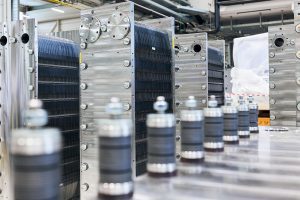Strohm designs and manufactures thermoplastic composite pipe (TCP) which is particularly suited for carrying hydrogen offshore and subsea. The corrosion-resistant technology does not fatigue or suffer from issues associated with using steel pipe for hydrogen, such as embrittlement. Manufactured in long spoolable lengths and flexible in nature, the pipe can be pulled directly into the wind turbine generator.
TCP does not require any maintenance and is suitable for over 30 years of operation, lowering the levelized cost of electricity (LCOE) to a minimum and enabling the decentralized concept solution.
As one of the pioneers in wind energy, Siemens Gamesa has already taken significant steps in shaping the industry and developing the basis for a decentralized offshore solution that fully integrates an electrolyzer into an offshore wind turbine, with clear benefits and value-add potential such as capex reduction, increase in system efficiency, and increase in wind farm uptime.






